The Independent's journalism is supported by our readers. When you purchase through links on our site, we may earn commission.
Belfast city guide: Where to stay, eat, drink and shop in Northern Ireland’s fun-loving capital
With a convivial food and nightlife scene, eye-opening tours and Titanic heritage, the Northern Irish capital makes for a lively weekend, says Hannah Foster-Roe
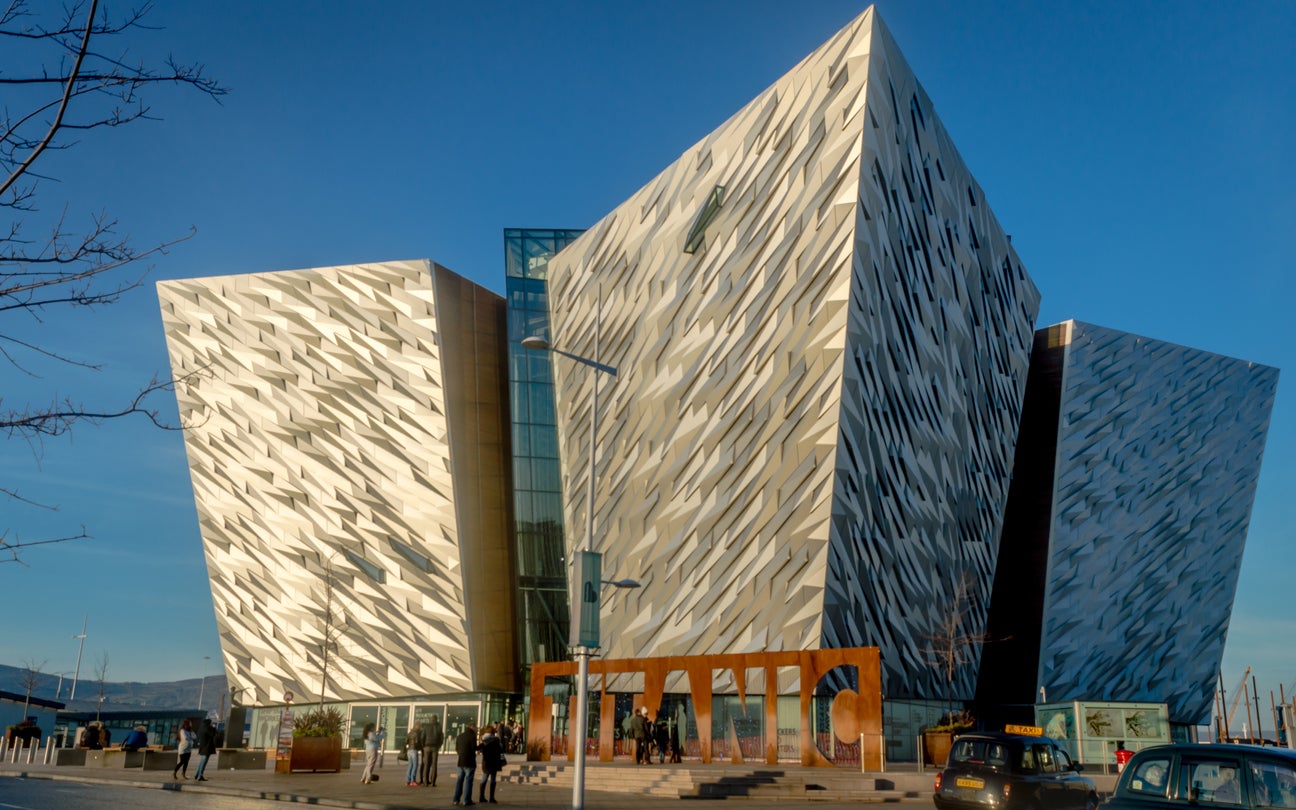
It may not have Dublin’s imperial prestige or the pop-culture draw of Derry-Londonderry, but what Belfast does have in spades is atmosphere. At one end of town lies a stretch of lively quayside, imbued with the fizz of people and a collective fun-loving spirit. To the other, an ominous smudge of dark green mountains just visible above the rooftops. Somewhere between the two rises the Belfast of today, shaped by a notably turbulent past that now fuels its artistic, resilient soul, as well as some thought-provoking visitor experiences.
The second-largest city on the island of Ireland is stacked with history: it bore witness to the birth of the world’s most infamous cruise liner, Titanic, and emerged battleworn from decades of (hauntingly recent) conflict. From making its early fortunes in the linen trade to becoming the gateway to numerous filming locations used in the Game of Thrones franchise, Belfast has seen it all.
For today’s visitor, it’s a city of diverse and characterful neighbourhoods, where revellers emerge rosy-cheeked from vibey watering holes in the Cathedral Quarter, and culture buffs browse the many museums, galleries and gardens of the Queen’s Quarter. The Gaeltacht Quarter is where you’ll hear the Irish language spoken and traditional folk music played; while the Titanic Quarter marks the city’s maritime heritage. Whichever you explore, you’ll find this capital is a brilliant, under-sung city break right under our noses.
What to do
Take a Titanic trek
Since 2012, Belfast’s ship-building legacy has been honoured with its own designated district. Presided over by a pair of towering yellow gantry cranes (known as “Samson and Goliath”), the waterfront Titanic Quarter is the place to dive into the city’s maritime history. Begin at Titanic Belfast, a purpose-built immersive exhibition dedicated to the tragic luxury liner. Titanic was constructed on the slipways of Belfast before foundering on its maiden voyage to New York, and this museum charts its brief lifespan: from the intricacies of its design to the aftermath of its sinking. It’s incredibly moving and somewhere you cannot simply rush through. Allow a good three hours to get the full experience. Adult tickets are £21.50 and include admission to the SS Nomadic, tender to the Titanic and the last-surviving White Star Line vessel.
Afterwards, dine in “Drawing Office Two” at the nearby Titanic Hotel, which is where designers from Harland and Wolff would dream up the visions for their impressive ships. Five minutes’ walk from here, a whiskey distillery also just opened in the old pumphouse on Thompson Dock.
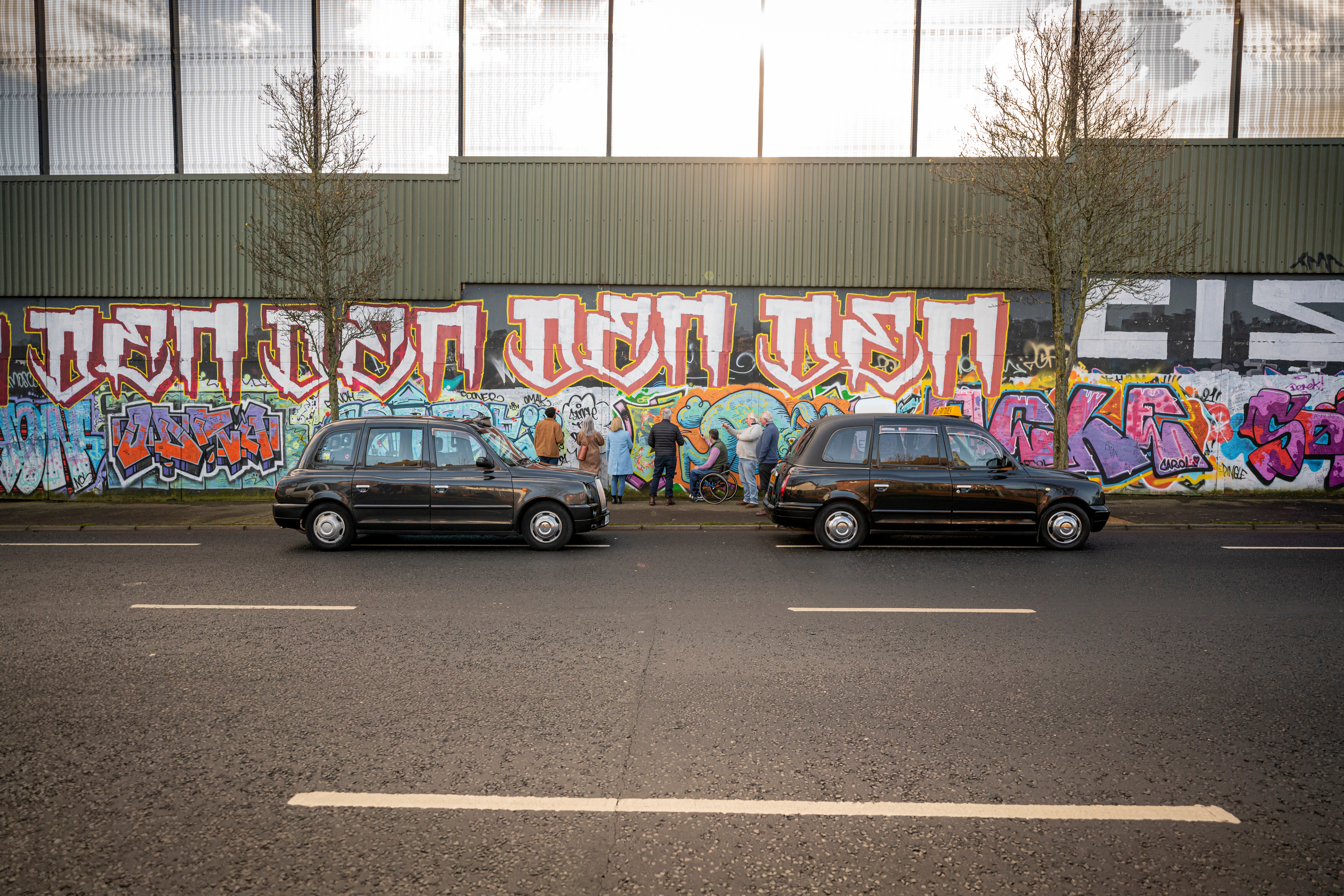
Hear both sides of the story
The political history of Northern Ireland is mysteriously absent from the British school curriculum. In order to fully appreciate the country’s complex landscape, consider taking the ‘Conflicting Stories’ walking tour (£23) of west Belfast. This tour is unique in that it is delivered by both Republican and Loyalist guides, who switch over halfway through. They each may have very different truths, but share a raw grief and a passion for their respective ideologies. As you move through the different neighbourhoods, you’ll be told personal tales of The Troubles from both perspectives, see striking murals and pause at sobering memorials either side of the Peace Wall – a 16-mile-long barrier that still separates the communities. It’s not an easy listen, but a necessary one.
If you want to hear more on the subject, tie in a visit to Crumlin Road Gaol, which served as a working prison for 150 years. Both Loyalists and Republicans were incarcerated here during the conflict. Buy online for the cheapest tickets, which cost £10.80 for adults.
Embrace culture and creativity
The Cathedral Quarter is Belfast’s cultural epicentre, peppered with vibrant street art, multi-disciplinary performance venues and popular food-and-drink hangouts. It’s also where the lion’s share of the city’s festivals take place, including Belfast Film Festival and Belfast International Arts Festival, which celebrates its 60th anniversary in 2022. As buzzy by day as it is by night, crowds flock here for the many bars, clubs, pubs, restaurants and arts spaces. Catch some contemporary theatre at the MAC, live music and raucous comedy at the Black Box, work from regional artists at Craft NI Gallery or narrative-changing photography exhibitions at Belfast Exposed. For nocturnal entertainment, head to The National – where you’ll find the biggest beer garden in the city – or the Duke of York on cobblestoned, fairy-lit Commercial Court.
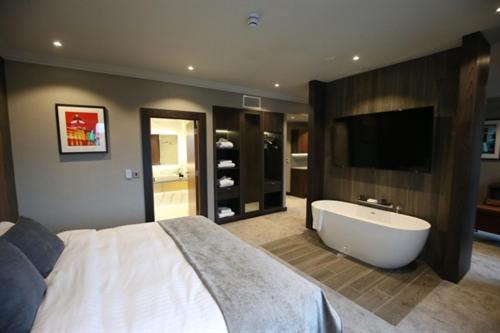
Where to stay
Ten Square
What was once a linen warehouse just behind City Hall is now the four-star boutique hotel, Ten Square. With a central location, friendly staff, fluffy beds and soft, chinchilla-grey interiors, it’s both flashy and functional. Doubles from £90 per night, room only. B&B upgrade extra. tensquare.co.uk.
The Harrison Chambers of Distinction
The Harrison Chambers of Distinction were built in 1879 and used for merchants’ lodgings before re-emerging as a hotel in 2020. Expect bold wallpaper, antique furnishings and roll-top tubs across just 16 rooms, all named after famed creatives with Belfast connections. Doubles from £101 per night, room only. chambersofdistinction.com
The Merchant Hotel
Fancy a bit of a splurge? The luxurious Merchant Hotel is a Belfast institution, renowned for its delicious breakfasts, historic setting and opulent décor inspired by a fusion of Victoriana and Art Deco styles. Doubles from £179 per night, room only. B&B upgrade extra. themerchanthotel.com
Vagabonds Hostel
If you’re simply looking for somewhere clean, comfortable and fuss-free to lay your head, the Vagabonds Hostel is ideal. Designed by a pair of seasoned travellers, it makes for a cosy and convivial base in the city’s university quarter. Doubles from £50 per night, B&B, with a shared bathroom. Dorm room beds start at £15 per person, per night. vagabondsbelfast.com
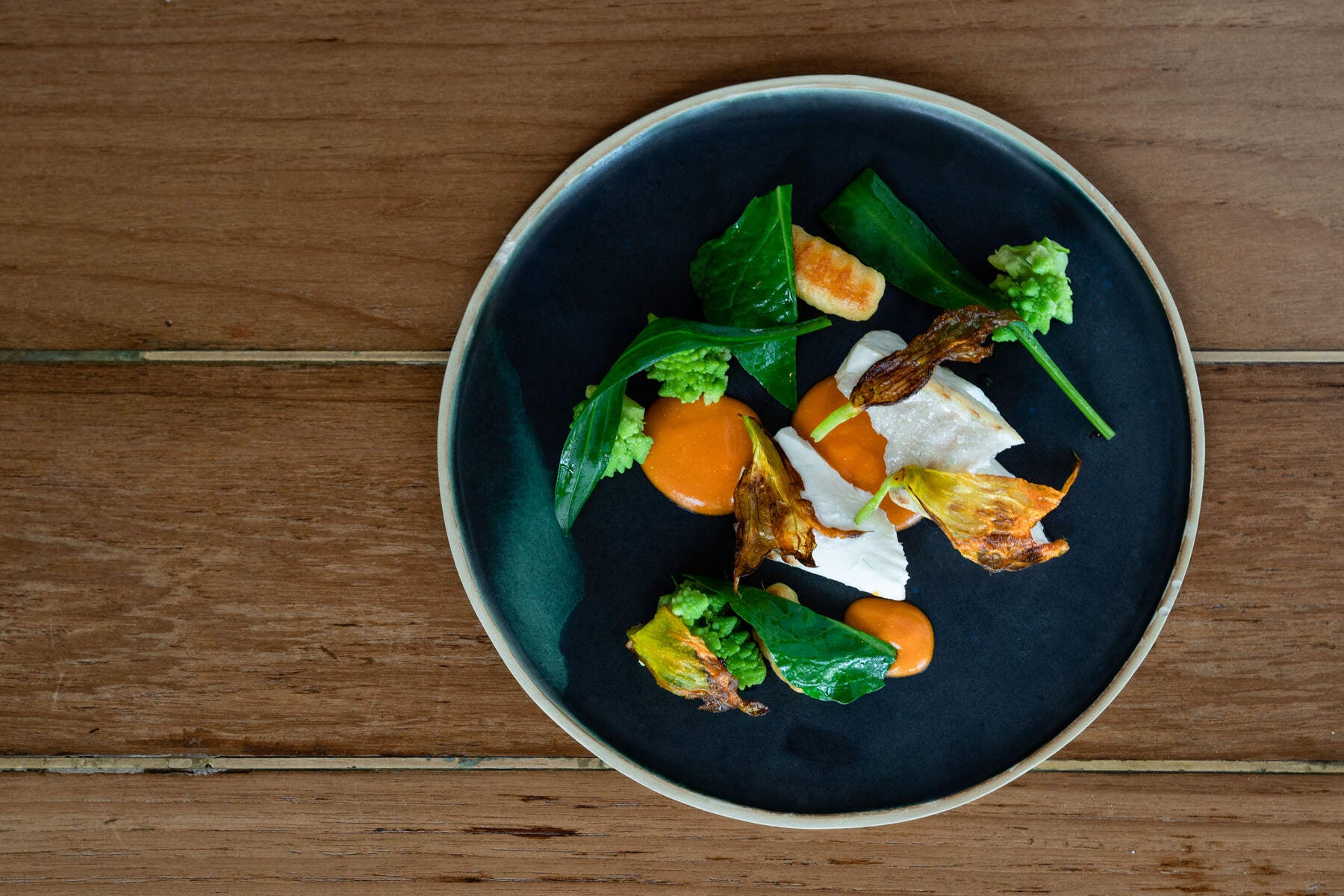
Where to eat
Perhaps surprisingly, Belfast is quite the foodie paradise, with a restaurant scene that brings together local produce and global flavours. Start the day right at General Merchants, where a lip-smackingly gorgeous Antipodean menu features pulled pork baps, granola bowls and smashed avocado with sourdough, fig and goat’s cheese. Just up the street from here is Haptik, another sought-after brunch spot where the fully-loaded breakfast muffin – crowned with a Guinness hash brown – is king.
Over on Botanic Avenue, enjoy a taste of Taiwan at Bao Bun, where curating your meal is just as satisfying as eating it. Choose from cloudlike steamed buns, dressed fries, rice or salad and a range of topping combinations. For a casual riverside lunch, Cutters Wharf sits on the Lagan’s towpath and serves wholesome brasserie-style dishes.
Some of the best steaks in the city can be found at James Street South, which promises quality ingredients lovingly prepared and complemented by great wine. Formal, but not excessively so, it works well for date nights and dinner with friends. If fine-dining is what the occasion calls for, then Michelin-starred restaurants like Deanes EIPIC and OX both offer culinary masterclasses in seasonal, modern gastronomy.
Where to drink
Caffeinated connoisseurs will want to swing by Established Coffee, a café and roastery with sleek interiors that evokes a cool, Scandinavian sense of calm. There’s also The Pocket, where you can pick up a milky cup of aromatic chai or rich hot chocolate, as well as fab coffee in various guises.
In search of something stronger? Stepping into the Crown Liquor Saloon is like falling through time itself, back to the days of Victorian gin palaces. Kelly’s Cellars is Belfast’s “oldest traditional bar”, first opened in 1720, and prides itself on not having changed much since then. Well known locally for a good pint of Guinness, it has no food menu, selling only drinks and bowls of hearty Irish stew. Its outdoor terrace is a relatively new addition, installed to account for Covid regulations, but is a firm favourite with merrymakers and music lovers.
Pair your pint with a live soundtrack at the The Dirty Onion, where new bands and acoustic acts appear every night of the week, and check out The Thirsty Goat if whiskey is your tipple of choice – order something from Bushmills for a nip of Northern Irish courage.
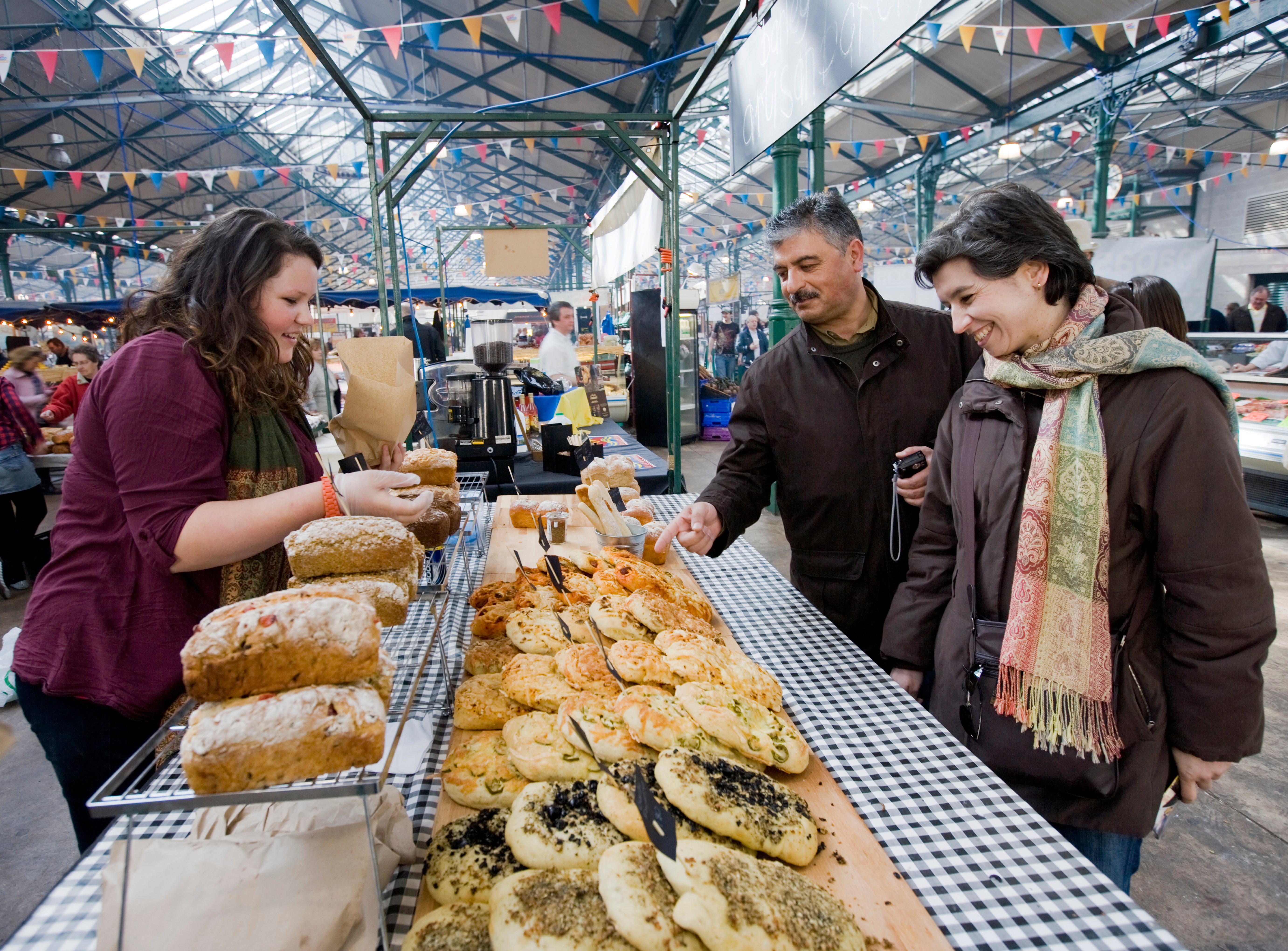
Where to shop
Who doesn’t love a covered market? Running from Friday to Sunday, Belfast’s St George’s Market has been around since the end of the 19th century. Here you’ll find everything from clothing, crafts and antiques to groceries, sweet treats and street food, often to be browsed to the backdrop of acoustic live musicians.
Belfast’s mainstream malls, Victoria Square and CastleCourt, are all well and good, but there are far more unique shopping experiences if you know where to look. Born & Bred, for instance, spotlights the handiwork of over 85 local artists and artisans across three floors. On Arthur Street, Avoca sells woven throws made in County Wicklow and other one-of-a-kind treasures, while No Alibis is a quirky independent bookstore located in leafy Queen’s.

Architectural highlight
Built to celebrate Queen Victoria granting Belfast city status at the turn of the 20th century, City Hall commands the heart of Belfast with its mint-green domes and imposing stone façade. The inside, which you can tour, is just as resplendent as the outside: think marble staircases, chandeliers, stained-glass windows and chessboard floors.
Nuts and bolts
What currency do they use?
Pound sterling (£/GBP).
What language do they speak?
English, but you’ll also likely hear some Irish spoken, especially in the Gaeltacht Quarter.
How much should I tip?
10-15 per cent in a restaurant, but check your final bill first in case a service charge has already been added. You might also wish to tip your taxi driver if they’re particularly good craic; tips for tour guides are appreciated, though not obligatory.
What’s the time difference?
There isn’t one: Northern Ireland is in the same time zone as the rest of the UK.
How should I get around?
The city centre is compact and therefore comfortably walkable, on days when that notoriously inclement Belfast weather holds off. With over 30 docking stations dotted across town, hiring a bike is a lovely option too. Otherwise, use a Visitor Pass to hop and off the Translink buses which operate locally, while their trains connect to other places within the county and beyond. Information on navigating Belfast with access requirements is available here.
What’s the best view?
Head to Cave Hill Country Park and join the demanding 4.5-mile circular trail, starting from Belfast Castle. Follow the green arrows – passing by hillforts, craters and caves – until you reach the summit, where cinematic views capture the vast city skyline and Belfast Lough. In clear conditions, you can even see out to Scotland.
Insider tip?
If you have the time, combine your Belfast city break with a trip to the Giant’s Causeway, where 40,000 hexagonal columns of basalt rock tumble down into ridiculously blue sea. Take the scenic route along the coastal road from Carrickfergus and continue through the picturesque Glens of Antrim.
Getting there
Trying to fly less?
Sail with Stena Line from Liverpool Birkenhead (journey time: 8hrs) or Cairnryan (2hrs 15mins), or with the Steam Packet Company from the Isle of Man (2hrs 45mins).
Fine with flying?
Regular flights, taking around an hour, run from most major UK airports to Belfast International (30mins’ drive to centre) or George Best Belfast City (10mins’ drive to centre).
Join our commenting forum
Join thought-provoking conversations, follow other Independent readers and see their replies
Comments
Bookmark popover
Removed from bookmarks